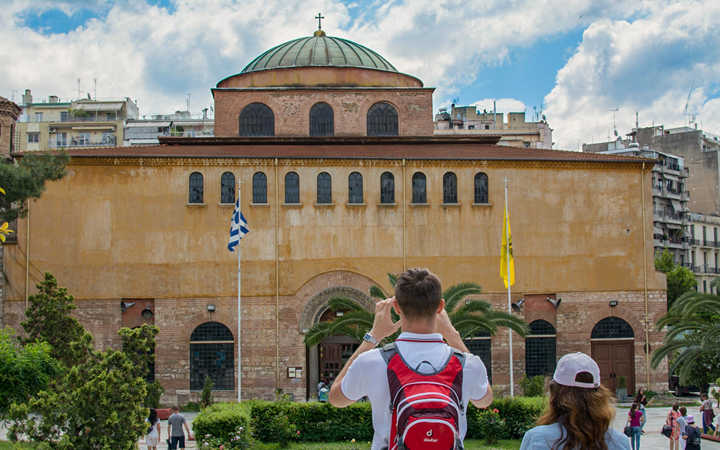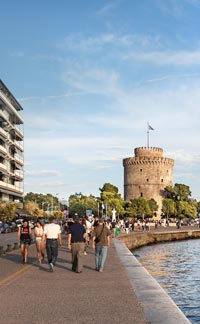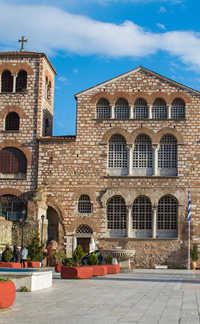Tucked in the heart of Thessaloniki, the Church of Hagia Sophia stands as one of the city’s most remarkable and spiritually significant landmarks. This centuries-old place of worship offers an unforgettable glimpse into the Byzantine era, combining deep religious symbolism with extraordinary architecture and art.
Historical Legacy and Architecture
Built in the late 7th century, the Church of Hagia Sophia was inspired by its grand namesake in Constantinople (modern-day Istanbul). It replaced an earlier Christian structure that had been destroyed, and was constructed during a period when Thessaloniki was a vibrant cultural and religious center of the Byzantine Empire.
Architecturally, Hagia Sophia in Thessaloniki follows a domed basilica design, blending classical Roman techniques with early Christian aesthetics. Its massive central dome, supported by four piers, rises dramatically over the nave and is decorated with a stunning 9th-century mosaic of the Ascension of Christ, framed by golden tiles and angelic figures. This dome is one of the finest surviving examples of Byzantine mosaic art in the Balkans.
Survival Through Centuries
Throughout its long history, the church has seen many transformations. It became a mosque during Ottoman rule, like many other Byzantine monuments, and was later restored as a Christian church after the liberation of Thessaloniki in the early 20th century. Despite damage from earthquakes and fires, the structure has been meticulously preserved and restored, maintaining much of its original grandeur.
Inside, visitors can admire frescoes, marble columns, and remnants of decorative flooring that reflect the artistic richness of the Middle Byzantine period. The church's relative simplicity on the outside contrasts sharply with the elaborate artwork and deep sense of peace found within its walls.
UNESCO Recognition and Modern Role
Hagia Sophia is listed as part of the UNESCO World Heritage Site group of Paleochristian and Byzantine Monuments of Thessaloniki. It remains an active Greek Orthodox church and plays a central role during important religious holidays and liturgical events.
Only a few minutes’ walk from Aristotelous Square, it’s easily accessible and a must-visit for those wanting to experience Thessaloniki’s spiritual and historical essence. Entry is free, and photography (without flash) is usually allowed inside.
For those interested in Byzantine history, sacred architecture, or peaceful places for reflection, the Church of Hagia Sophia offers a profound and memorable stop on any Thessaloniki itinerary.


















